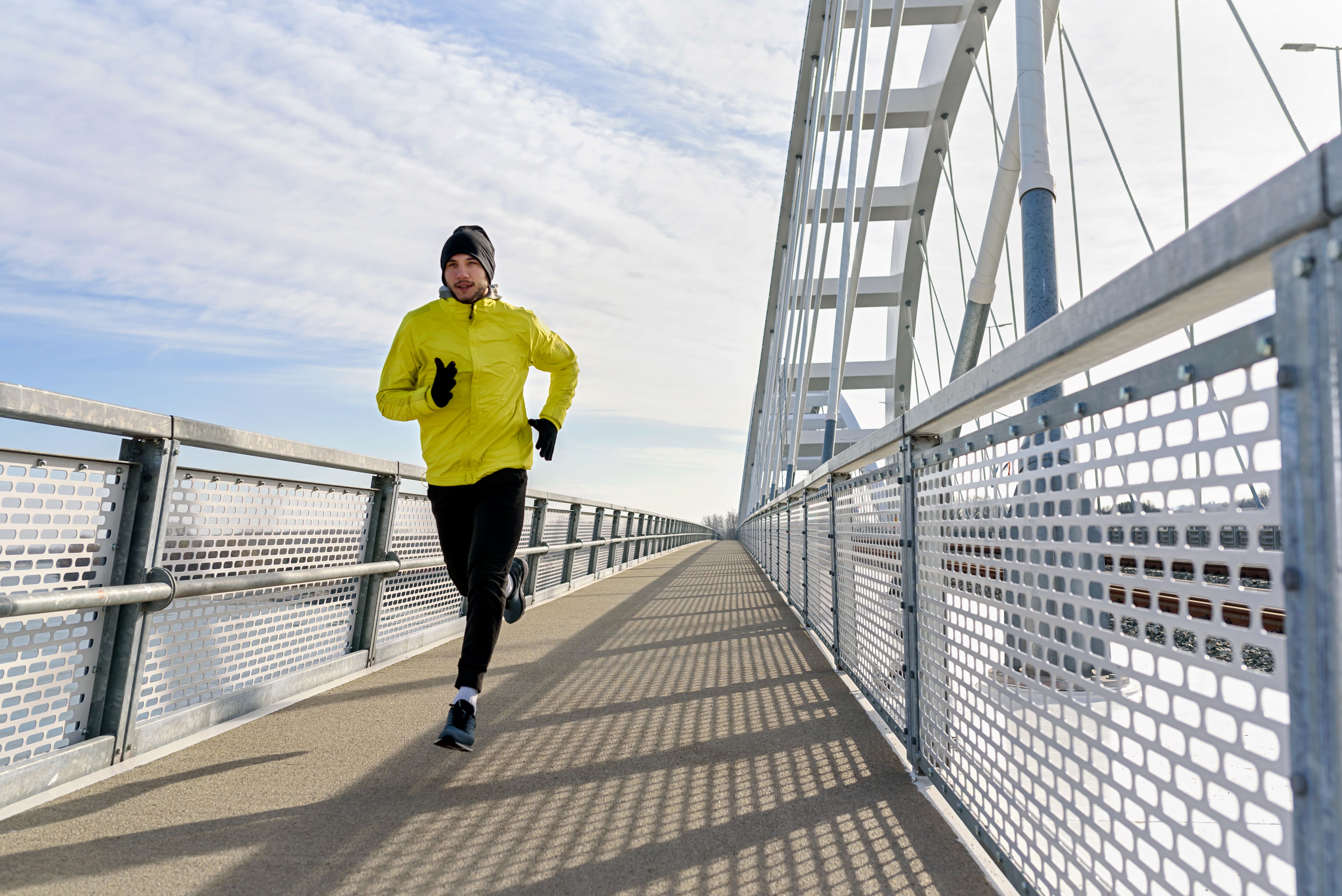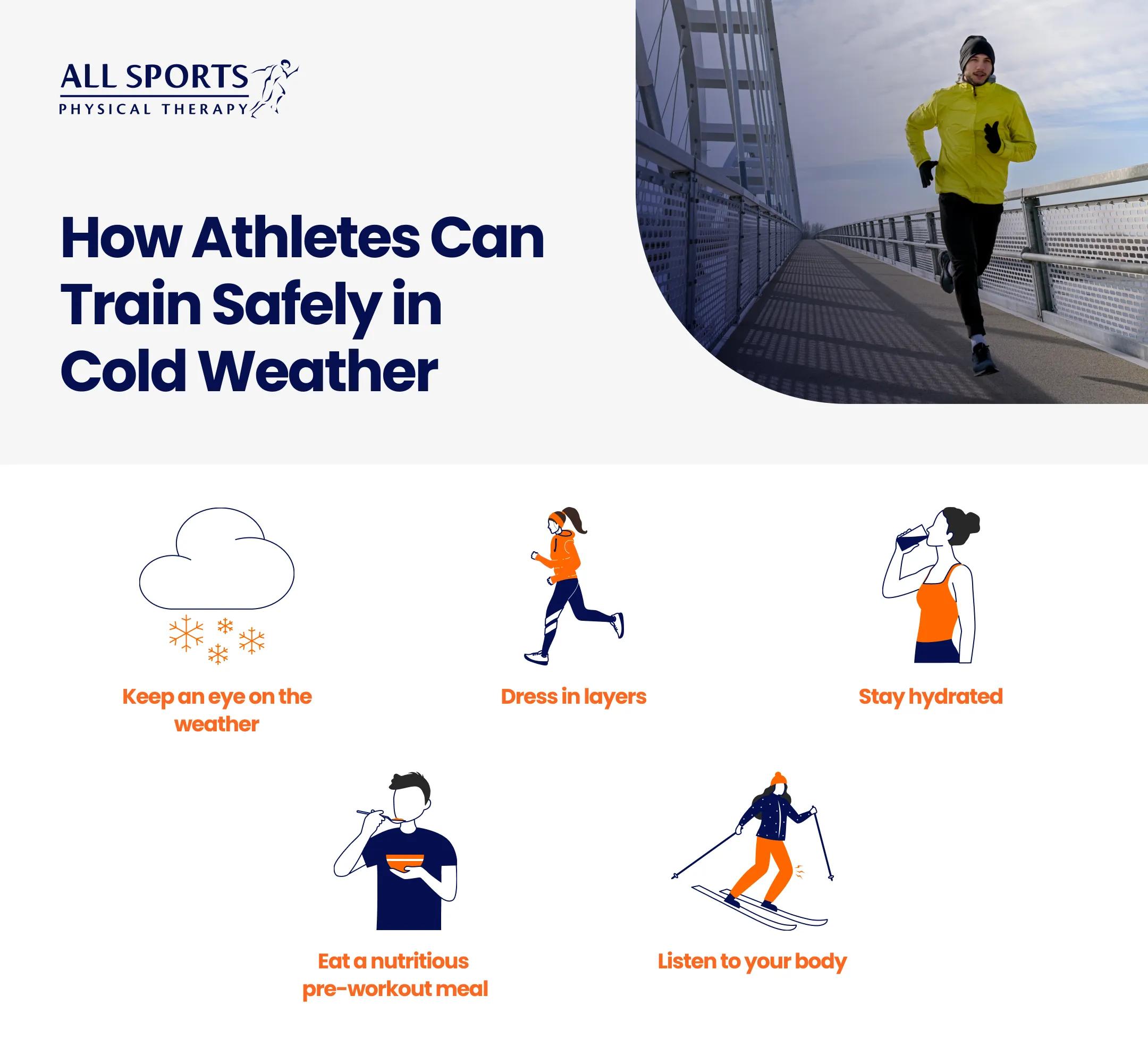How Athletes Can Train Safely in Cold Weather
Sports Medicine, Workout Injuries

Winter is no time to skip exercise. In fact, it may be the best time to stay in shape.
When temperatures drop, even the most dedicated athletes might be tempted to trade their workouts for a cozy blanket and hot cocoa. But skipping your routine during winter would be a mistake. Cold weather training offers numerous benefits, and with the right approach, you might even find you prefer exercising as the thermometer dips.
While training in the cold has its risks, they can be minimized with a few simple precautions. Let’s explore the advantages of cold weather training and how to stay safe while doing it.
Benefits (and risks) of cold weather training
Although skiing, snowboarding, and skating rank at the top of winter sports, you can do any outdoor exercise in the winter. Hiking, jogging, or even a brisk walk in the cold can provide a good workout, which brings these benefits:
- Cardio Booster. In cold weather, your heart works harder to pump blood, giving your cardiovascular system an extra workout with every activity.
- Calorie Burner. Your body burns additional calories to maintain warmth, so cold weather training can help shed extra pounds as your metabolism revs up.
- Mood Improver. Feeling down when the days turn cold and dark? Cold weather training combats the wintertime blues by flooding your body with mood-boosting endorphins.
- Immune Enhancer. Regular exercise supports your immune system, potentially helping you fend off seasonal colds.
That’s not to say cold weather training is without risks. Skiing, snowboarding, and skating pose the potential of slips and falls on icy terrain, which can break bones and damage ligaments.
Additionally, if the temperature falls below 0°F and the wind chill drops to -17°F, you are better off taking your workout inside to avoid hypothermia and frostbite. With hypothermia, your body shuts down, you experience intense shivering, and you may become confused. Frostbite, which can develop on exposed skin within 30 minutes at a wind chill of -19°F, can cause numbness and discolored skin. If you notice those signs, seek warmer environments and treatment as soon as you can.
Preparing for cold weather training

Now that you know the benefits of cold weather training, prepare yourself for an invigorating workout with these tips:
- Stretch. When the atmosphere turns chilly, stretching before and after your workout becomes even more important. Muscles tend to tighten up in the cold, so loosen them up. Use dynamic stretches (like walking lunges or jumping jacks) to warm up before your workout and static stretches to cool down, holding each position for 20–45 seconds to maintain flexibility.
- Hydrate. Think your water bottle is only for warm-weather exercise? Think again. Your body is working out, so it must stay hydrated to regulate your temperature. A good rule of thumb is to drink seven to 10 ounces for every 20 minutes of exercise, with eight ounces after the workout to replenish your fluids.
- Dress in layers. Multiple layers of clothing retain body heat, keeping you warm when cold weather training. If you feel hot, you can always take a piece of clothing off. Choose exercise wear that wicks away moisture so your body doesn’t get damp and cold. Also, don’t forget to put on gloves and a hat. Fingers are especially vulnerable to frostbite, and most of your body heat escapes through your head.
- Get the right gear. Whether hitting the slopes or taking a wintertime hike, get the right gear and make sure it’s in good shape. Strong, well-maintained equipment can prevent injuries. When skiing or snowboarding, wear a helmet and protect your vulnerable knees with pads. Going for a run or hike? Purchase shoes with cleats for better traction on icy ground.
- Fuel your body. As mentioned previously, your body burns more calories when training in the cold, so give it the fuel it needs. Eat high-carbohydrate and protein-rich foods such as peanut butter, oranges, and energy bars to power up your cold-weather training.
Heat up your wintertime exercise routine
All Sports Physical Therapy works with patients year-round to reach their fitness goals. Whether you’re looking to overcome an injury or just want to get more out of your workouts, our therapists have the expertise and training to help you achieve a healthier lifestyle. Contact us today for a consultation.



